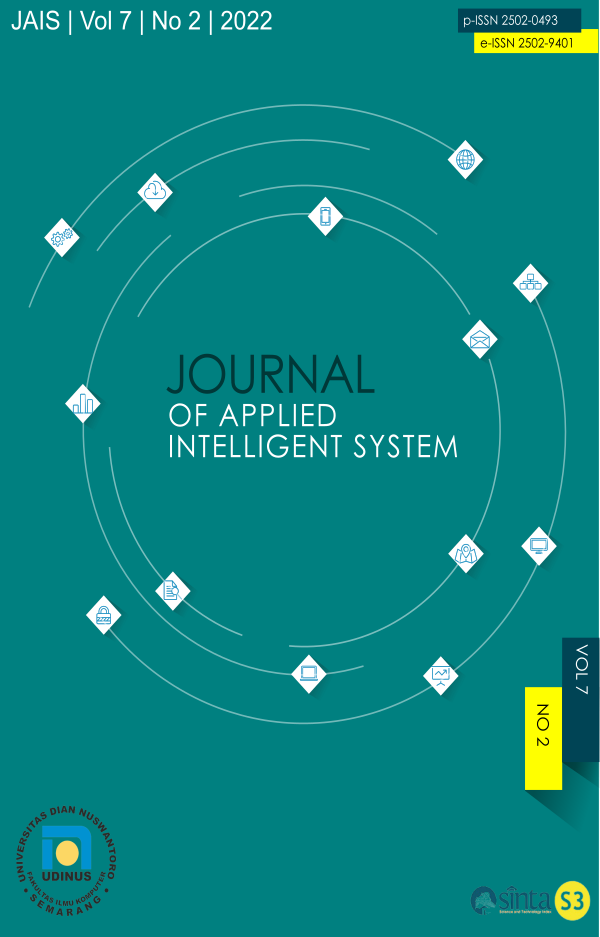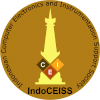Expert System for Diagnosing Potential Diabetes Attacks Using the Fuzzy Tsukamoto
DOI:
https://doi.org/10.33633/jais.v7i2.6796Abstract
Diabetes is one of the top three killers in Indonesia. According to the 2014 sample enrollment survey, the number of people with diabetes is increasing year by year. This is because the diagnosis of the disease is delayed. Also unhealthy lifestyle. In an era of fast and efficient technological advancement, this is a very good thing for advancement in various fields. More and more fields of knowledge are developing, one of which is expert systems. An expert system is a software or computer program that matches the ability of an expert, meaning that it can match humans with special abilities that ordinary people cannot solve. Expert systems aim to solve specific problems, such as in fields such as medicine, education, etc. This expert system takes as inputs several variables consisting of transient blood sugar (GDS), fasting blood sugar (GDP), frequent hunger, thirst, weight loss, and urine (BAK), the method used by the author is Fuzzy Tsukamoto. This Tsukamoto method states that every result of IF-Then must be described as a fuzzy set with an immutable or monotonic membership function, and uses PHP for programming. The results obtained in the study conducted by the authors were in the form of an expert system that detects diabetes and obtains results with 94% accuracy.References
J. Singla et al., “A Novel Fuzzy Logic-Based Medical Expert System for Diagnosis of Chronic Kidney Disease,” Mob. Inf. Syst., vol. 2020, pp. 1–13, Jun. 2020.
R. N. C. Devi, S. T. Safitri, and F. M. Wibowo, “Penerapan Metode Fuzzy Logic Tsukamoto Dalam Penentu Alat Kontrasepsi,” Pros. SENDI_U 2018, pp. 88–96, 2018.
Z. Abrishami and H. Tabatabaee, “Design of A Fuzzy Expert System And A Multi-Layer Neural Network System For Diagnosis Of Hypertension,” Pharmacol. Life Sci. Bull. Env. Pharmacol. Life Sci, no. 11, pp. 138–145, 2015.
Z. Niswati, F. A. Mustika, and A. Paramita, “Fuzzy logic implementation for diagnosis of Diabetes Mellitus disease at Puskesmas in East Jakarta,” J. Phys. Conf. Ser., vol. 1114, no. 1, p. 012107, Nov. 2018.
N. Novita, “Metode Fuzzy Tsukamoto Untuk Menentukan Beasiswa,” J. Penelit. Tek. Inform. Vol. 1 Nomor 1, Oktober 2016, vol. 1, pp. 51–54, 2016.
F. Hamedan, A. Orooji, H. Sanadgol, and A. Sheikhtaheri, “Clinical decision support system to predict chronic kidney disease: A fuzzy expert system approach,” Int. J. Med. Inform., vol. 138, no. 1, p. 104134, Jun. 2020.
I. K. Mujawar, B. T. Jadhav, and K. Patil, “Web-based Fuzzy Expert System for Symptomatic Risk Assessment of Diabetes Mellitus,” Int. J. Comput. Appl., vol. 182, no. 3, pp. 5–12, Jul. 2018.
I. K. Mujawar and B. T. Jadhav, “Web-based Fuzzy Expert System for Diabetes Diagnosis,” Int. J. Comput. Sci. Eng., vol. 7, no. 2, pp. 995–1000, Feb. 2019.
I. K. Mujawar, B. T. Jadhav, V. B. Waghmare, and R. Y. Patil, “Online approach for Diabetes Diagnosis and Classification with Expert System Modules using Fuzzy Logic,” in 2019 IEEE Pune Section International Conference (PuneCon), 2019, pp. 1–6.
L. J. Muhammad and E. A. Algehyne, “Fuzzy based expert system for diagnosis of coronary artery disease in nigeria,” Health Technol. (Berl)., vol. 11, no. 2, pp. 319–329, Mar. 2021.
O. Geman, I. Chiuchisan, and R. Toderean, “Application of Adaptive Neuro-Fuzzy Inference System for diabetes classification and prediction,” in 2017 E-Health and Bioengineering Conference (EHB), 2017, pp. 639–642.
H. Fatemidokht and M. K. Rafsanjani, “Development of a hybrid neuro-fuzzy system as a diagnostic tool for Type 2 Diabetes Mellitus,” in 2018 6th Iranian Joint Congress on Fuzzy and Intelligent Systems (CFIS), 2018, vol. 2018-Janua, pp. 54–56.
A. A. Abdullah, N. S. Fadil, and W. Khairunizam, “Development of Fuzzy Expert System for Diagnosis of Diabetes,” in 2018 International Conference on Computational Approach in Smart Systems Design and Applications (ICASSDA), 2018, pp. 1–8.
R. Meza-Palacios, A. A. Aguilar-Lasserre, E. L. Ureña-Bogarín, C. F. Vázquez-Rodríguez, R. Posada-Gómez, and A. Trujillo-Mata, “Development of a fuzzy expert system for the nephropathy control assessment in patients with type 2 diabetes mellitus,” Expert Syst. Appl., vol. 72, no. 1, pp. 335–343, Apr. 2017.
H. Thakkar, V. Shah, H. Yagnik, and M. Shah, “Comparative anatomization of data mining and fuzzy logic techniques used in diabetes prognosis,” Clin. eHealth, vol. 4, pp. 12–23, 2021.
S. Ankalaki, L. Noolvi, and J. Majumdar, “Leaf Identification Based on Fuzzy C Means and Naïve Bayesian Classification,” Int. J. Adv. Res. Eng. Technol., vol. 5, no. 7, pp. 71–82, 2014.
M. D. Abràmoff et al., “Improved automated detection of diabetic retinopathy on a publicly available dataset through integration of deep learning,” Investig. Ophthalmol. Vis. Sci., vol. 57, no. 13, pp. 5200–5206, 2016.
W. L. Alyoubi, W. M. Shalash, and M. F. Abulkhair, “Diabetic retinopathy detection through deep learning techniques: A review,” Informatics Med. Unlocked, vol. 20, p. 100377, 2020.
V. Bhandari and R. Kumar, “Comparative Analysis of Fuzzy Expert Systems for Diabetic Diagnosis,” Int. J. Comput. Appl., vol. 132, no. 6, pp. 8–14, Dec. 2015.
D. K. Choubey, S. Paul, and V. K. Dhandhenia, “Rule based diagnosis system for diabetes,” Biomed. Res., vol. 28, no. 12, pp. 5196–5209, 2017.
Downloads
Published
Issue
Section
License
- Authors retain copyright and grant the journal right of first publication with the work simultaneously licensed under a Creative Commons Attribution License that allows others to share the work with an acknowledgment of the work's authorship and initial publication in this journal.
- Authors are able to enter into separate, additional contractual arrangements for the non-exclusive distribution of the journal's published version of the work (e.g., post it to an institutional repository or publish it in a book), with an acknowledgment of its initial publication in this journal.
- Authors are permitted and encouraged to post their work online (e.g., in institutional repositories or on their website) prior to and during the submission process, as it can lead to productive exchanges, as well as earlier and greater citation of published work (See The Effect of Open Access).











